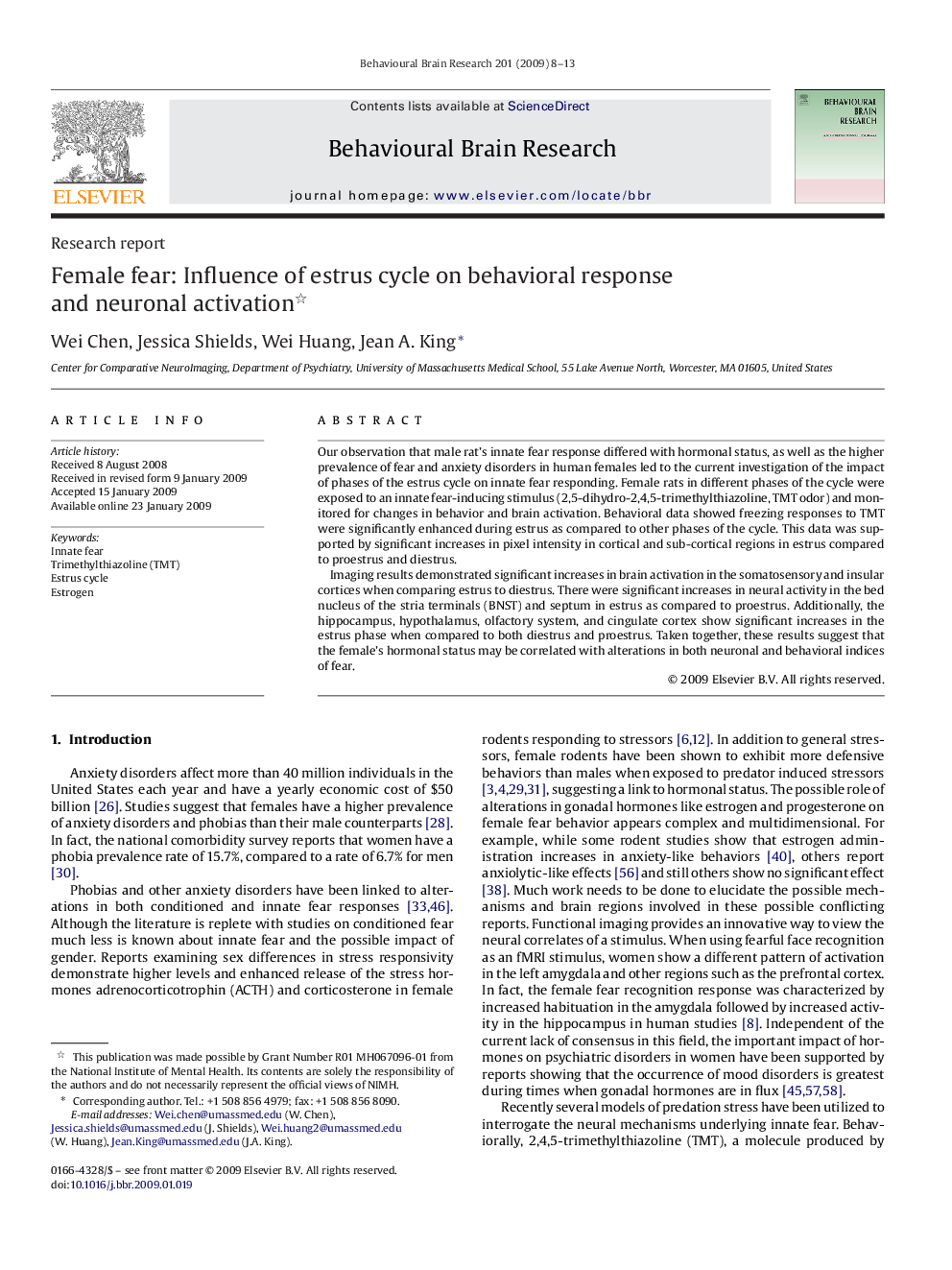| Article ID | Journal | Published Year | Pages | File Type |
|---|---|---|---|---|
| 4314620 | Behavioural Brain Research | 2009 | 6 Pages |
Our observation that male rat's innate fear response differed with hormonal status, as well as the higher prevalence of fear and anxiety disorders in human females led to the current investigation of the impact of phases of the estrus cycle on innate fear responding. Female rats in different phases of the cycle were exposed to an innate fear-inducing stimulus (2,5-dihydro-2,4,5-trimethylthiazoline, TMT odor) and monitored for changes in behavior and brain activation. Behavioral data showed freezing responses to TMT were significantly enhanced during estrus as compared to other phases of the cycle. This data was supported by significant increases in pixel intensity in cortical and sub-cortical regions in estrus compared to proestrus and diestrus.Imaging results demonstrated significant increases in brain activation in the somatosensory and insular cortices when comparing estrus to diestrus. There were significant increases in neural activity in the bed nucleus of the stria terminals (BNST) and septum in estrus as compared to proestrus. Additionally, the hippocampus, hypothalamus, olfactory system, and cingulate cortex show significant increases in the estrus phase when compared to both diestrus and proestrus. Taken together, these results suggest that the female's hormonal status may be correlated with alterations in both neuronal and behavioral indices of fear.
